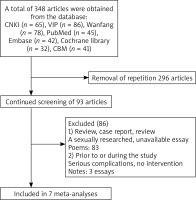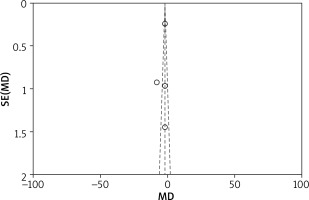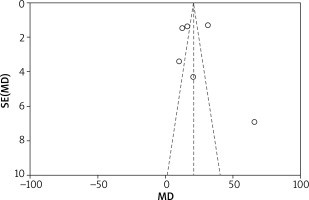Introduction
Pulmonary fibrosis (PF) is a chronic progressive interstitial lung disease caused by a variety of factors, clinically characterized by active dyspnoea, restrictive ventilatory dysfunction, hypoxaemia, and ultimately death from respiratory and circulatory failure, with serious harm to human health [1, 2]. Oxidative stress is one of the molecular mechanisms of PF [3]. Type 2 diabetes mellitus (T2MD) is a common disease characterized by polyphagia, polyphagia, polyuria, and weight loss, which has a complex pathogenesis and is associated with insulin resistance [4, 5]. Studies have shown that high blood sugar can induce accumulation of reactive oxygen species (ROS) and lead to oxidative stress [6].
Rosewood astragalus is the active ingredient of Dragon’s blood and the bioactive ingredient of rosewood, grape, and blueberry. It is a natural plant extract that can prevent oxidative stress, and has anti-tumour, anti-inflammatory, and anti-fibrosis effects. Rosewood astragalus is a methylated derivative of resveratrol with higher bioavailability. Therefore, Pterocarpus roseus L. is a kind of natural plant active ingredient with low toxicity, high efficiency, rich resources, and low price. Several studies have shown that Pterocarpus roseus L. has an antioxidant effect [7, 8]. However, there are some problems such as the small scale of research and uncertain specific efficacy.
Aim
In this paper, the therapeutic effects of Pterocarpus on oxidative pathway-related diseases such as pulmonary fibrosis, diabetes mellitus, and myocardial infarction were analysed and evaluated systematically.
Material and methods
Document retrieval
A computer search was performed of all the randomly controlled animal experiments in Chinese and English databases such as China HowNet (CNKI), Wanfang, VIP, PubMed, Embase, Cochrane, and China Biomedical Database (CBM) on the efficacy of Curcuma zedoaria and its active ingredients on experimental HF.
The database was searched up to 31 May 2021. The Chinese search words were “Rosewood Astragalus”, “Effective Ingredients of Rosewood”, “Extract of Rosewood”, “Decoction of Rosewood”, etc. The English search words were “pterostilbene”, “pterostilbene ingredient”, “pterostilbene extract”, “pterostilbene water decoction”, etc.
Incorporation criteria
Type of randomized controlled animal experiment.
Subjects animal PF models established by different modelling methods (both rats and mice may be used).
The intervention group was treated with normal saline or routine feeding, and the intervention group was treated with Pterocarpus membranaceus. The dosage and course of treatment were not limited.
Outcome indicators malondialdehyde (MDA), superoxide dismutase (SOD), and other physicochemical factors.
Exclusion criteria
(1) Repeated publication; (2) Failure to obtain the full text; (3) Severe complications of the study subjects prior to or during the study; and (4) Inclusion of other CHM ingredients or compound preparations in the intervention.
Literature screening and data extraction
Two researchers used Note Express software to screen the literature independently by reading abstracts and full texts according to the inclusion criteria and exclusion criteria. Extracted information included: authors, publication time, sample size, randomized protocol, interventions, outcome indicators, and Jadad score, with a one-by-one cross-check. In case of disagreement, a third researcher helped to resolve the problem.
Quality evaluation
Quality evaluation criteria were evaluated using the SYRCLE Animal Experimental Risk Assessment Tool. The evaluation was conducted by 2 researchers independently and checked with each other. In the case of disagreement, discussion and consultation was performed with a third researcher. The assessment items include the following: (1) whether the generation or application of the allocation sequence was sufficient; (2) whether the baseline of each group was the same; (3) whether the allocation was sufficient; (4) whether the animals were randomly placed during the experiment; (5) whether the researchers were blinded; (6) whether the animals in the outcome evaluation were randomly selected; (7) whether the outcome evaluators were blinded; (8) whether incomplete data were reported; (9) whether the study report was irrelevant to the selective outcome report; and (10) whether there was no other bias. Each item was divided into 3 levels of (yes, no) and presented in the relevant table.
Statistical analysis
Rev Man 5.4 software was used for data consolidation and statistical analysis. The odds ratio (OR) and 95% confidence interval (CI) were used as the statistical analysis of effect indicators for the binary variables, and the weighted mean difference (WMD) and 95% confidence interval (CI) were used as the statistical analysis of effect for the continuous variables. The difference of p < 0.05 was considered as statistically significant. The heterogeneity was analysed by χ2 test and I2. The heterogeneity of 95% CI, I2 > 75% was too large to be combined, I2 < 25% was small, and p < 0.05 was statistically significant. Publication bias was also assessed using Rev Man 5.4 software for funnel mapping. If the literature was distributed symmetrically in the funnel diagram, the probability of publication bias was small. If the funnel distribution was obviously asymmetric, there was a large publication bias.
Results
Results according to the searching strategy
Three hundred and eighty-nine related literatures were searched, 296 duplicated literatures were excluded. The remaining 7 articles were included in the systematic evaluation according to the inclusion criteria and exclusion criteria. The process and results of literature screening are shown in Figure 1.
Basic characteristics of inclusion studies
Finally, 7 articles were included, including 5 Chinese articles and 2 English articles. The total sample size was 124 cases, including 62 cases in the intervention group and 62 cases in the model group; publication year 2015–2021; rats or mice; basic characteristics of the included literature are shown in Table 1, and intervention methods and outcome indicators are shown in Table 2.
Table 1
Essential characteristics of the inclusion study
Table 2
Intervention methods and outcome indicators included in the study
Included in literature quality evaluation
Random was mentioned in all of the 7 literatures. All the data in the literature were complete, no selective results were reported, and other sources of bias were uncertain. Risk bias is assessed in Table 3.
Table 3
Risk bias assessment for inclusion in research literature
Main outcome indicators
1. Relevant physical and chemical indicators
– Four articles on MDA indicators. A total of 32 subjects were compared with MDA. Using fixed-effect model analysis, the study showed excessive heterogeneity (p < 0.00001, I2 = 93%). The effect of PTE on MDA was better than that of the model group (MD = –2.23, 95% CI: –2.68, –1.79, n = 4, I2 = 93%). The results are shown in Figure 2.
– Publication bias plotting is a common method for identifying publication bias. The funnel maps are drawn with the MD values included in the study as abscissa and SE (MD) as ordinate, as shown in Figure 3. Figure 3 shows that the left and right are asymmetrical and not funnel-shaped, suggesting a greater likelihood of publication bias.
– PF-related MDA markers. Among the 4 articles on pulmonary fibrosis, 2 articles [9] and 12 subjects were associated with pulmonary fibrosis. Using fixed-effect model analysis, the study showed excessive heterogeneity (I2 = 98%, p < 0.00001). The effect of PTE on MDA index was better than that of the model group (MD = –2.27, 95% CI: –2.74, –1.80, n = 2, I2 = 98%). The results are shown in Figure 4.
2. Antioxidant associated protein index
– SOD. In this study, 7 articles [10] were used to compare SOD indices among 62 subjects. Using fixed-effect model analysis, the study showed excessive heterogeneity (I2 = 96%, p < 0.00001). The effect of the intervention group was better than that of the model group (MD = 20.87, 95% CI: 19.41–22.33; n = 7, I2 = 96%). The results are shown in Figure 5.
– Publication bias. Funnel diagrams are drawn with MD values included as abscissa and SE (MD) as ordinate, as shown in Figure 6. Figure 6 shows that the left and right are asymmetrical and not funnel-shaped, suggesting a greater likelihood of publication bias.
– PF-related SOD markers. These 7 articles and 2 articles [11] PF-related SOD markers were compared among 12 subjects. Using fixed-effect model analysis, the study showed that the heterogeneity was close to the critical value of relatively large (I2 = 73%, p = 0.05). The effect of the intervention group on SOD expression was greater than that of the model group (MD = 14.61, 95% CI: 12.65–16.57, n = 2, I2 = 73%). The results are shown in Figure 7.
Discussion
PF is a devastating and progressive interstitial lung disease, and there is no effective drug targeting pulmonary fibrosis. Most scholars at home and abroad believe that oxidative stress is the key to pulmonary fibrosis, and that it interacts with other pathophysiological processes to make lung tissue damage and repair imbalance, myofibroblasts increase, extracellular matrix accumulation, and jointly promotes the occurrence and development of pulmonary fibrosis. Therefore, it is one of the main ways to treat PF by regulating oxidative stress and related inflammatory factors [12].
Rosewood astragalus (3,5-dimethoxy-4 ‘-hydroxy stilbene) is an active ingredient derived from plants such as rosewood, blueberry, grape, and palm. Astragalus roseus is reported to have anti-cancer, anti-inflammatory, antioxidant, and analgesic effects [13]. Rosewood astragalus is a non-flavonoid polyphenolic compound derived from resveratrol by methoxyl substitution of the third and fifth phenolic hydroxyl groups. Resveratrol is metabolized into Pterocarpus roseus and spruce new glycoside; hence, they have similar pharmacological characteristics. Experiments show that, under the same conditions, rosewood stilbene has higher bioavailability and bioactivity than resveratrol [14].
In terms of safety, no significant toxic or side effects were observed when sandalwood was administered to animals at a dose of 3000 mg/(kg · day) Therefore, Rosewood stilbene may be more suitable for further development and clinical application than resveratrol. Similar to resveratrol, Pterocarpus roseus is considered to be a powerful natural antioxidant, manifested in the following ways: 1) reducing oxidative stress and reactive oxygen species (ROS), such as hydrogen peroxide (H2O2) and superoxide anion (O2–); and 2) increasing expression of SOD in different cell lines. MDA is an important factor of oxidative stress, which has toxic effects on cells and tissues. SOD is a classical antioxidant enzyme. The content of SOD in mouse lung indirectly reflects the oxidative state of the lung. The intervention included in this study was Pterocarpus roseus. The results showed that Pterocarpus roseus L. can promote cell antioxidant function through multiple targets and multiple pathways, and play a role in treating experimental liver fibrosis, diabetes, myocardial infarction, and other oxidative pathway-related diseases. Although this paper used rigorous screening criteria, there are still some limitations, such as the inclusion of literature dominated by Chinese, and generally low quality evaluation, which may lead to selective bias and other uncertainties. Now the unified evaluation system and standard of curative effect will be formed, and the principle of multi-center, large sample and random control will be adopted in the experiments and clinical studies, and the objective indexes will be brought into consideration, so as to form a high-level evidence-based basis and further guide the clinical work.















